
[fusion_builder_container background_color=”#ffffff” background_image=”” background_parallax=”none” enable_mobile=”no” parallax_speed=”0.3″ background_repeat=”no-repeat” background_position=”left top” video_url=”” video_aspect_ratio=”16:9″ video_webm=”” video_mp4=”” video_ogv=”” video_preview_image=”” overlay_color=”” overlay_opacity=”0.5″ video_mute=”yes” video_loop=”yes” fade=”no” border_size=”0px” border_color=”#ffffff” border_style=”solid” padding_top=”30″ padding_bottom=”30″ padding_left=”30″ padding_right=”30″ hundred_percent=”no” equal_height_columns=”no” hide_on_mobile=”no” menu_anchor=”” class=”” id=””][fusion_builder_row][fusion_builder_column type=”1_3″ last=”no” spacing=”yes” center_content=”no” hide_on_mobile=”no” background_color=”” background_image=”” background_repeat=”no-repeat” background_position=”left top” hover_type=”none” link=”” border_position=”all” border_size=”0px” border_color=”” border_style=”” padding=”” margin_top=”” margin_bottom=”” animation_type=”” animation_direction=”” animation_speed=”0.1″ animation_offset=”” class=”” id=””][fusion_imageframe lightbox=”no” gallery_id=”” lightbox_image=”” style_type=”none” hover_type=”none” bordercolor=”” bordersize=”0px” borderradius=”0″ stylecolor=”” align=”none” link=”” linktarget=”_self” animation_type=”0″ animation_direction=”down” animation_speed=”0.1″ animation_offset=”” hide_on_mobile=”no” class=”” id=””] 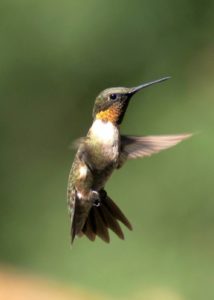 [/fusion_imageframe][/fusion_builder_column][fusion_builder_column type=”2_3″ last=”yes” spacing=”yes” center_content=”no” hide_on_mobile=”no” background_color=”” background_image=”” background_repeat=”no-repeat” background_position=”left top” hover_type=”none” link=”” border_position=”all” border_size=”0px” border_color=”” border_style=”” padding=”” margin_top=”” margin_bottom=”” animation_type=”” animation_direction=”” animation_speed=”0.1″ animation_offset=”” class=”” id=””][fusion_text]
[/fusion_imageframe][/fusion_builder_column][fusion_builder_column type=”2_3″ last=”yes” spacing=”yes” center_content=”no” hide_on_mobile=”no” background_color=”” background_image=”” background_repeat=”no-repeat” background_position=”left top” hover_type=”none” link=”” border_position=”all” border_size=”0px” border_color=”” border_style=”” padding=”” margin_top=”” margin_bottom=”” animation_type=”” animation_direction=”” animation_speed=”0.1″ animation_offset=”” class=”” id=””][fusion_text]
In a flurry of acrobatics and antics they defend their feeders and gardens, as they pass through on their annual fall migration. They are a beloved visitor by young and old alike. With their presence Plants For All Season’s becomes a buzz with all the stories and excitement these tiny wonders bring. People are eager to draw them to their own yards, increase their numbers, and just make their landscapes a natural playground for them.
Hummingbirds migrate through the Houston area in Spring and Fall. They remember every plant and feeder they have ever been to, so once you encourage them into your landscape they will return each season to feed as they pass through. Below is some helpful information on tending to our winged friends.[/fusion_text][/fusion_builder_column][fusion_builder_column type=”4_5″ last=”no” spacing=”yes” center_content=”no” hide_on_mobile=”no” background_color=”” background_image=”” background_repeat=”no-repeat” background_position=”left top” hover_type=”none” link=”” border_position=”all” border_size=”0px” border_color=”” border_style=”” padding=”” margin_top=”” margin_bottom=”” animation_type=”” animation_direction=”” animation_speed=”0.1″ animation_offset=”” class=”” id=””][fusion_text]Feeders
There are a number of great feeders on the market. When choosing a feeder start with one that is easy to clean. To keep hummers happy there is some routine maintenance involved, so a feeder that comes apart and can be reassembled easily will make it easier on you to perform these tasks. If you are just starting your community, a feeder with red on it will help catch their eye as they fly by.
Since some of these little guys can be quite territorial having multiple feeders spread out throughout the yard can help disperse aggression. Placing them with good distance and where there is an obstruction in the line of site from one feeder to the next, such as a branch, plant, trellis, or around a corner can be helpful too.
Clean feeders with hot tap water. Feeders should be cleaned every 2-4 days depending on the temperatures. The hotter it is the more frequent the cleanings. If necessary a solution of 1 part vinegar to 2 parts water may be used to soak the feeders, scrub any fungal growth, and then thoroughly rinse.[/fusion_text][/fusion_builder_column][fusion_builder_column type=”1_5″ last=”yes” spacing=”yes” center_content=”no” hide_on_mobile=”no” background_color=”” background_image=”” background_repeat=”no-repeat” background_position=”left top” hover_type=”none” link=”” border_position=”left” border_size=”3px” border_color=”#c9d6c0″ border_style=”solid” padding=”10px” margin_top=”40px” margin_bottom=”” animation_type=”0″ animation_direction=”down” animation_speed=”0.1″ animation_offset=”” class=”” id=””][fusion_text]
Try hand feeding with Nectar Dots. Available in our gift shop.
[/fusion_text][/fusion_builder_column][fusion_builder_column type=”1_3″ last=”no” spacing=”yes” center_content=”no” hide_on_mobile=”no” background_color=”” background_image=”” background_repeat=”no-repeat” background_position=”left top” hover_type=”none” link=”” border_position=”all” border_size=”0px” border_color=”” border_style=”” padding=”” margin_top=”” margin_bottom=”” animation_type=”” animation_direction=”” animation_speed=”0.1″ animation_offset=”” class=”” id=””][fusion_imageframe lightbox=”no” gallery_id=”” lightbox_image=”” style_type=”none” hover_type=”none” bordercolor=”” bordersize=”15px” borderradius=”0″ stylecolor=”” align=”none” link=”” linktarget=”_self” animation_type=”0″ animation_direction=”down” animation_speed=”0.1″ animation_offset=”” hide_on_mobile=”no” class=”” id=””] 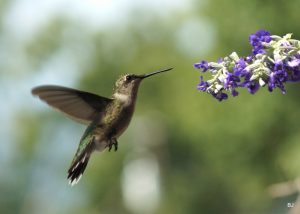 [/fusion_imageframe][fusion_imageframe lightbox=”no” gallery_id=”” lightbox_image=”” style_type=”none” hover_type=”none” bordercolor=”” bordersize=”15px” borderradius=”0″ stylecolor=”” align=”none” link=”” linktarget=”_self” animation_type=”0″ animation_direction=”down” animation_speed=”0.1″ animation_offset=”” hide_on_mobile=”no” class=”” id=””]
[/fusion_imageframe][fusion_imageframe lightbox=”no” gallery_id=”” lightbox_image=”” style_type=”none” hover_type=”none” bordercolor=”” bordersize=”15px” borderradius=”0″ stylecolor=”” align=”none” link=”” linktarget=”_self” animation_type=”0″ animation_direction=”down” animation_speed=”0.1″ animation_offset=”” hide_on_mobile=”no” class=”” id=””] 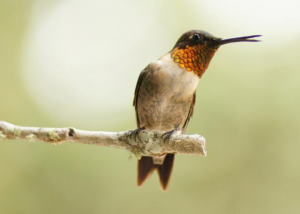 [/fusion_imageframe][fusion_imageframe lightbox=”no” gallery_id=”” lightbox_image=”” style_type=”none” hover_type=”none” bordercolor=”” bordersize=”15px” borderradius=”0″ stylecolor=”” align=”none” link=”” linktarget=”_self” animation_type=”0″ animation_direction=”down” animation_speed=”0.1″ animation_offset=”” hide_on_mobile=”no” class=”” id=””]
[/fusion_imageframe][fusion_imageframe lightbox=”no” gallery_id=”” lightbox_image=”” style_type=”none” hover_type=”none” bordercolor=”” bordersize=”15px” borderradius=”0″ stylecolor=”” align=”none” link=”” linktarget=”_self” animation_type=”0″ animation_direction=”down” animation_speed=”0.1″ animation_offset=”” hide_on_mobile=”no” class=”” id=””] 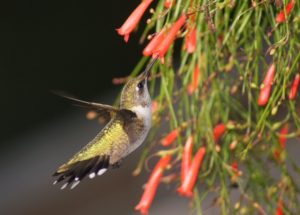 [/fusion_imageframe][/fusion_builder_column][fusion_builder_column type=”2_3″ last=”yes” spacing=”yes” center_content=”no” hide_on_mobile=”no” background_color=”” background_image=”” background_repeat=”no-repeat” background_position=”left top” hover_type=”none” link=”” border_position=”all” border_size=”0px” border_color=”” border_style=”” padding=”” margin_top=”” margin_bottom=”” animation_type=”” animation_direction=”” animation_speed=”0.1″ animation_offset=”” class=”” id=””][fusion_text]Nectar
[/fusion_imageframe][/fusion_builder_column][fusion_builder_column type=”2_3″ last=”yes” spacing=”yes” center_content=”no” hide_on_mobile=”no” background_color=”” background_image=”” background_repeat=”no-repeat” background_position=”left top” hover_type=”none” link=”” border_position=”all” border_size=”0px” border_color=”” border_style=”” padding=”” margin_top=”” margin_bottom=”” animation_type=”” animation_direction=”” animation_speed=”0.1″ animation_offset=”” class=”” id=””][fusion_text]Nectar
Hummingbirds eat about every 15 minutes and will consume double if not triple their body weight in a day. Providing quality nectar free of artificial ingredients and dyes will be important in maintaining hummer health. You can choose from commercially prepared nectars which have been formulated for hummer health and ease of preparation or you can make your own.
Homemade Hummer Nectar
1 cup granulated sugar
4 cups water
Bring water to a boil on the stove top or in a microwave, pour in sugar and mix well until sugar is completely dissolved in solution. Allow to cool before filling feeders. (Do not substitute sugar with Sugar in the raw, artificial sweetener, honey or any other alternative sweetener source. These products can be harmful to hummers.)
Want to provide a natural food source as well? Plants such as Salvias, Hamelia/Hummingbird bush, Firecracker Fern, Trumpet Vine, Turks Cap, Butterfly Weed, and Esperanza are few of their favorites.
[/fusion_text][/fusion_builder_column][fusion_builder_column type=”1_1″ last=”yes” spacing=”yes” center_content=”no” hide_on_mobile=”no” background_color=”” background_image=”” background_repeat=”no-repeat” background_position=”left top” hover_type=”none” link=”” border_position=”all” border_size=”0px” border_color=”” border_style=”” padding=”” margin_top=”” margin_bottom=”” animation_type=”” animation_direction=”” animation_speed=”0.1″ animation_offset=”” class=”” id=””][fusion_text]Bees & Ants
If your feeder becomes swarmed or bothered by bees and ants your hummers may become irritated and leave the feeder. There area few things you can do to help remedy this.
- Hang feeders with fishing line as this is hard for ants to climb
- Hang the feeder as far off of tree limbs and gutters as you can
- Use an ant mote
- Relocate the feeder a few feet away, Bees and ants will not follow but the hummers will quickly find it
- Keep feeders clean
[/fusion_text][/fusion_builder_column][fusion_builder_column type=”2_3″ last=”no” spacing=”yes” center_content=”no” hide_on_mobile=”no” background_color=”” background_image=”” background_repeat=”no-repeat” background_position=”left top” hover_type=”none” link=”” border_position=”all” border_size=”0px” border_color=”” border_style=”” padding=”” margin_top=”” margin_bottom=”” animation_type=”” animation_direction=”” animation_speed=”0.1″ animation_offset=”” class=”” id=””][fusion_text]Now sit back and enjoy!
There is still some time before they begin to move out towards the end of September, early October. As populations decrease in your yard, don’t rush to pull all your feeders; they will naturally migrate on their own. Some will leave sooner than others and there is a small percentage that stays through the winter. Feeders can begin to be taken down in October or a week after the last hummingbird is seen.
I want to say thank you to Barbara Jansa for visiting with me on these beloved winged friends. She has a rich history not only observing and documenting these beautiful birds but photographing them as well. She has provided the amazing pictures I am including in this post. As always feel free to stop by our location we are always happy to help.[/fusion_text][/fusion_builder_column][fusion_builder_column type=”1_3″ last=”yes” spacing=”yes” center_content=”no” hide_on_mobile=”no” background_color=”” background_image=”” background_repeat=”no-repeat” background_position=”left top” hover_type=”none” link=”” border_position=”all” border_size=”0px” border_color=”” border_style=”” padding=”” margin_top=”” margin_bottom=”” animation_type=”” animation_direction=”” animation_speed=”0.1″ animation_offset=”” class=”” id=””][fusion_imageframe lightbox=”no” gallery_id=”” lightbox_image=”” style_type=”none” hover_type=”none” bordercolor=”” bordersize=”15px” borderradius=”0″ stylecolor=”” align=”none” link=”” linktarget=”_self” animation_type=”0″ animation_direction=”down” animation_speed=”0.1″ animation_offset=”” hide_on_mobile=”no” class=”” id=””] 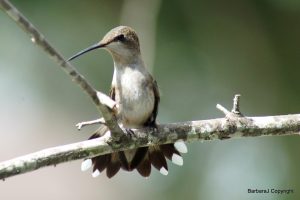 [/fusion_imageframe][fusion_imageframe lightbox=”no” gallery_id=”” lightbox_image=”” style_type=”none” hover_type=”none” bordercolor=”” bordersize=”15px” borderradius=”0″ stylecolor=”” align=”none” link=”” linktarget=”_self” animation_type=”0″ animation_direction=”down” animation_speed=”0.1″ animation_offset=”” hide_on_mobile=”no” class=”” id=””]
[/fusion_imageframe][fusion_imageframe lightbox=”no” gallery_id=”” lightbox_image=”” style_type=”none” hover_type=”none” bordercolor=”” bordersize=”15px” borderradius=”0″ stylecolor=”” align=”none” link=”” linktarget=”_self” animation_type=”0″ animation_direction=”down” animation_speed=”0.1″ animation_offset=”” hide_on_mobile=”no” class=”” id=””] 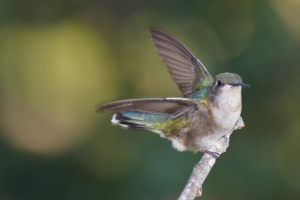 [/fusion_imageframe][/fusion_builder_column][/fusion_builder_row][/fusion_builder_container]
[/fusion_imageframe][/fusion_builder_column][/fusion_builder_row][/fusion_builder_container]

Comments (2)
I have always heard to put red food coloring in the sugar water is that true or false?
Sorry for the delayed response. The answer is False. Red food coloring is not necessary, and in some cases maybe harmful to them. It is best to just stick with good ole granulated sugar and water. Most feeders have red incorporated in to them to help catch the hummers attention as they pass. If not a simple red ribbon can be tied to the tree or feeder to help them take notice, or get just get creative. I had hung leaf cutouts coated in red glitter from my tree for fall near my feeders and caught my hummers checking them out frequently. One customer told me she puts out a red umbrella with her feeders. So have fun with it. Don’t forget to clean your feeders and provide fresh nectar routinely as dirty feeders and poor nectar will cause them to avoid your feeder faster than lack of red.
Comments are closed.